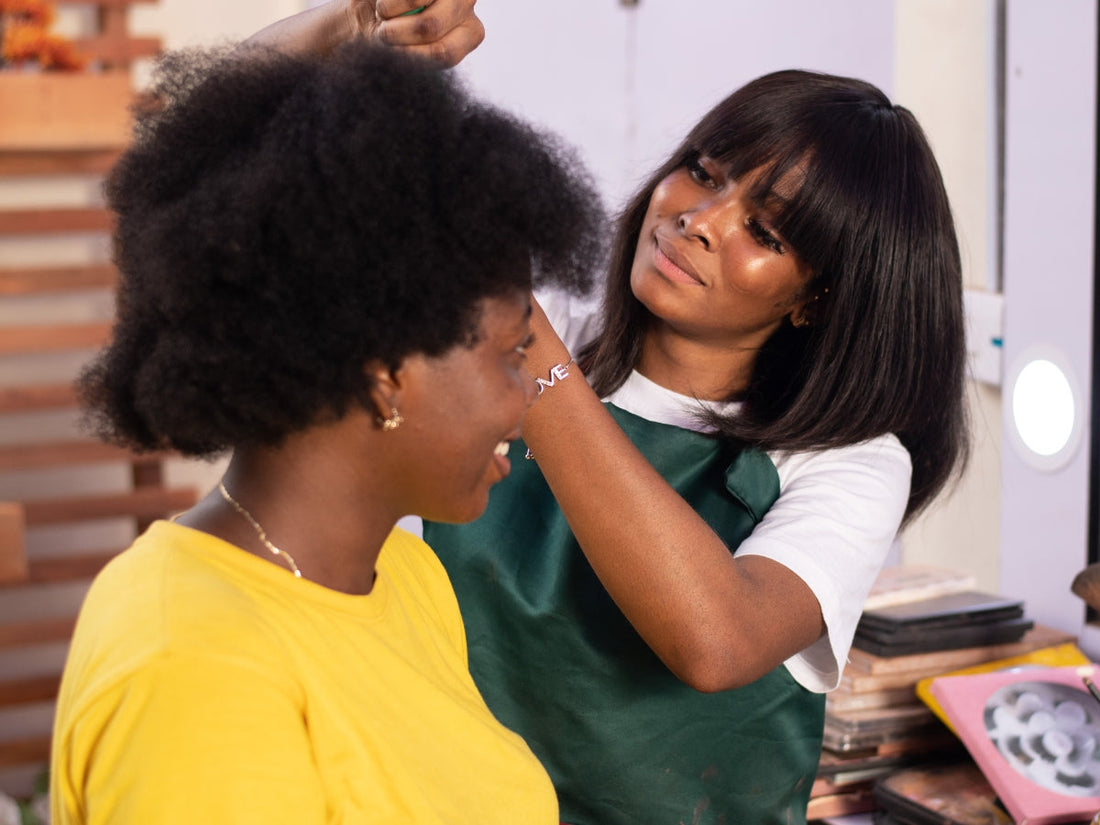
10 Essential Things to Know Before Getting Hair Extensions in Ireland
Share
Thinking about trying hair extensions to add length, volume, or just a bit of glam? Extensions are a fantastic way to transform your look quickly. But before you dive in, it’s important to understand what to expect — from the types of extensions and how to care for them, to choosing the right stylist and protecting your natural hair. Here’s your easy, friendly guide to everything you should know before getting hair extensions in Ireland.
1. What Types of Hair Extensions Are There?
There are several kinds of hair extensions, and each works differently depending on your hair type, lifestyle, and how long you want to wear them:
- Clip-In Extensions: Temporary and easy to attach yourself using clips. Great for occasional use.
- Tape-In Extensions: Thin wefts attached with tape. Ideal for fine to medium hair. Lasts several weeks.
- Sew-In or Weave Extensions: Sewn onto braided natural hair. Best for thick/coarse hair. Lasts 6–8 weeks.
- Micro-Link or Bead Extensions: Attached with tiny beads. Great for medium to thick hair. Can last a few months.
- Fusion or Keratin Extensions: Strands bonded with keratin glue. Natural-looking and long-lasting but needs professional removal.
- Halo or Flip-In Extensions: Hair on a wire that sits on your head. Quick and ideal for fine hair or temporary changes.
If unsure, consult a salon in Ireland for expert advice on what suits your hair and lifestyle best.
2. What About the Cost?
Extensions are an investment — not just the application, but also care and upkeep. Cheaper isn’t always better. High-quality hair and professional application mean better results and less damage.
Also consider: special hair products, maintenance appointments, and replacements in your budget.
3. Human Hair vs. Synthetic Hair — Which Should You Choose?
- Human Hair: Feels natural, can be styled and coloured. Lasts longer and blends better.
- Synthetic Hair: Cheaper, but can’t be heat styled or dyed. Shorter lifespan and may tangle more easily.
In Ireland, most people prefer human hair for a more natural and flexible result.
4. How Do You Take Care of Hair Extensions?
- Brush 2–3 times daily with a loop or extension-safe brush, starting from the ends.
- Tie hair in a loose braid or ponytail before bed to avoid tangles.
- Sleep on a silk or satin pillowcase to reduce friction.
- Use leave-in conditioner on the ends to maintain softness.
- Minimise heat tools and always use heat protectant spray.
- Use sulphate-free shampoos and conditioners made for extensions.
- Wash gently with downward strokes; avoid applying conditioner at the roots.
- Pat dry with a towel and air dry when possible.
Tip: After swimming in lakes, pools, or the sea, rinse your extensions with fresh water immediately.
5. How Long Will Extensions Last?
- Clip-in / Halo: 6–12 months (if well cared for)
- Tape-ins / Sew-ins: 6–8 weeks
- Micro-link / Fusion: 3–4 months
Excess heat, improper washing, or sleeping with wet hair can reduce their lifespan.
6. Should You Get Extensions at a Salon or DIY?
Clip-ins and halo styles are great for DIY. But semi-permanent options like tape-ins, fusion, or micro-links require a professional for safe application and best results.
Professionals offer personalised colour matching, expert care, and proper guidance.
7. How to Keep Your Scalp and Natural Hair Healthy
Watch out for:
- Pain, redness, or irritation near extension sites
- Excessive shedding or bumps
Tips to protect your scalp and hair:
- Use lightweight extensions suited to your hair
- Don’t place extensions too close to the scalp
- Take breaks between extension applications
- Use sulphate-free, gentle products
- Avoid tight hairstyles that pull the hair
8. Finding the Right Stylist in Ireland
Look for a stylist with:
- Certification in multiple extension methods
- Experience with your hair type
- A portfolio of before-and-after photos
- Strong reviews from Irish clients
- Willingness to provide a detailed consultation
Ask questions about the type of extensions they recommend, maintenance, total cost, and time involved.
9. Removing Extensions Properly
Only clip-in and halo extensions are safe to remove at home. All other types should be removed by a professional to avoid breakage.
After removal:
- Deep condition your hair
- Avoid heat styling for 1–2 weeks
- Trim any split or damaged ends
- Give your scalp gentle care with massage or treatment
10. Other Ways to Change Up Your Hair
- Wigs: Full coverage with lace front or hand-tied options
- Hair Toppers: Clip-on volume for thinning or crown areas
- Growth Treatments: Serums and therapies to promote stronger natural hair
Conclusion
Hair extensions are a great way to change your look and add volume. Just be sure to choose the right type, care for them properly, and work with a skilled stylist in Ireland. With good maintenance, your extensions will look natural and help protect your real hair too.
Enjoy your new style with confidence!
